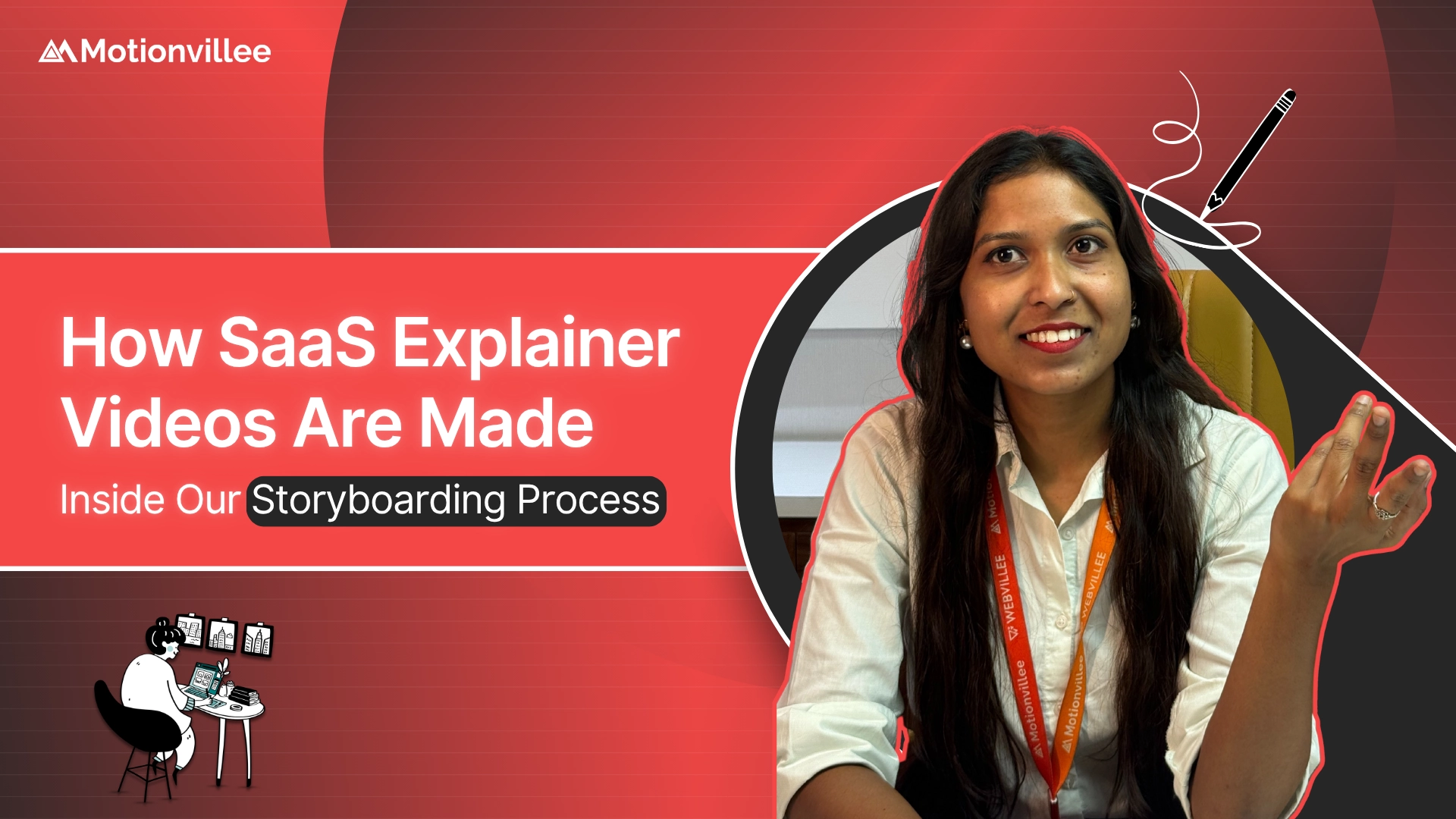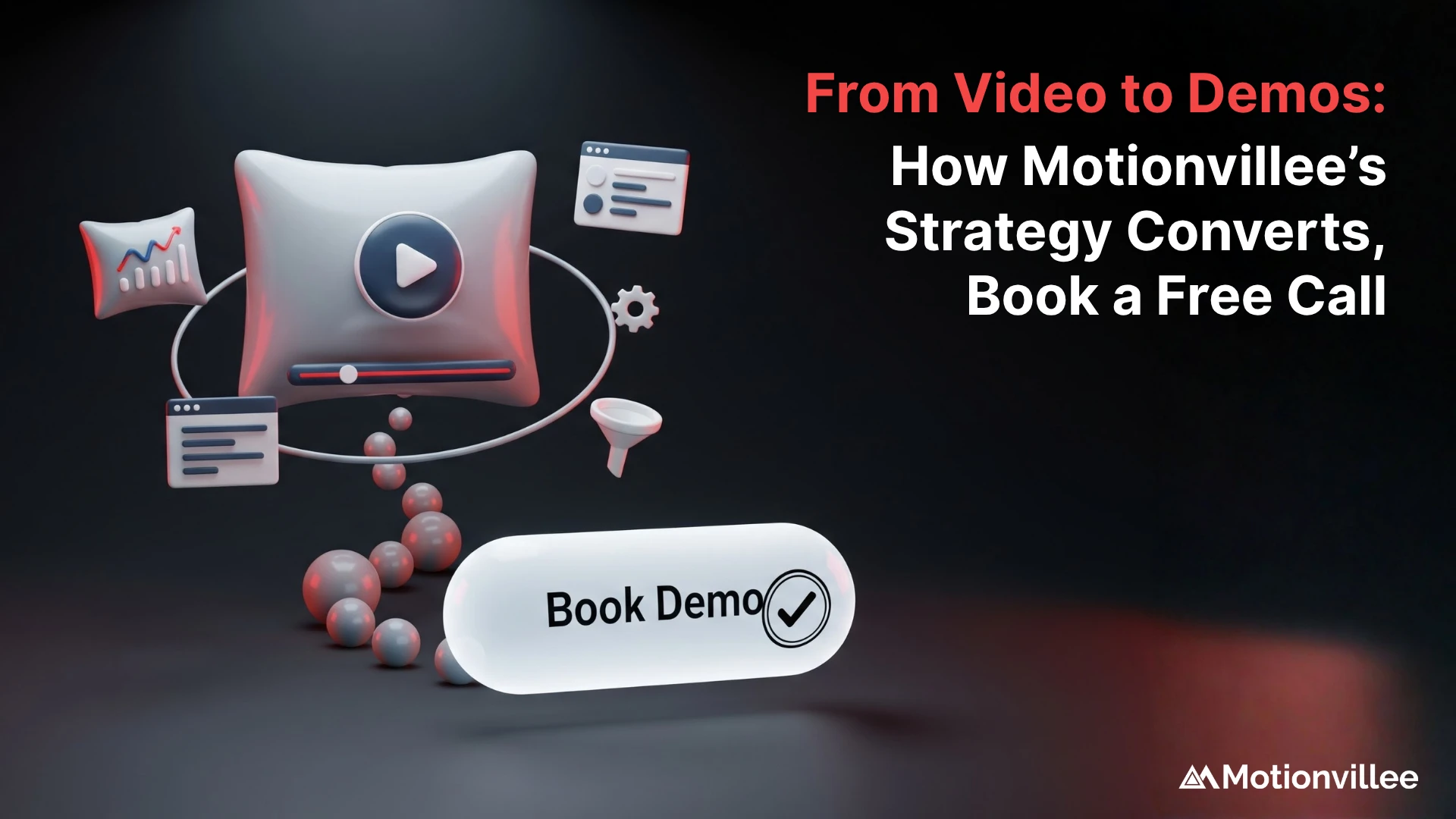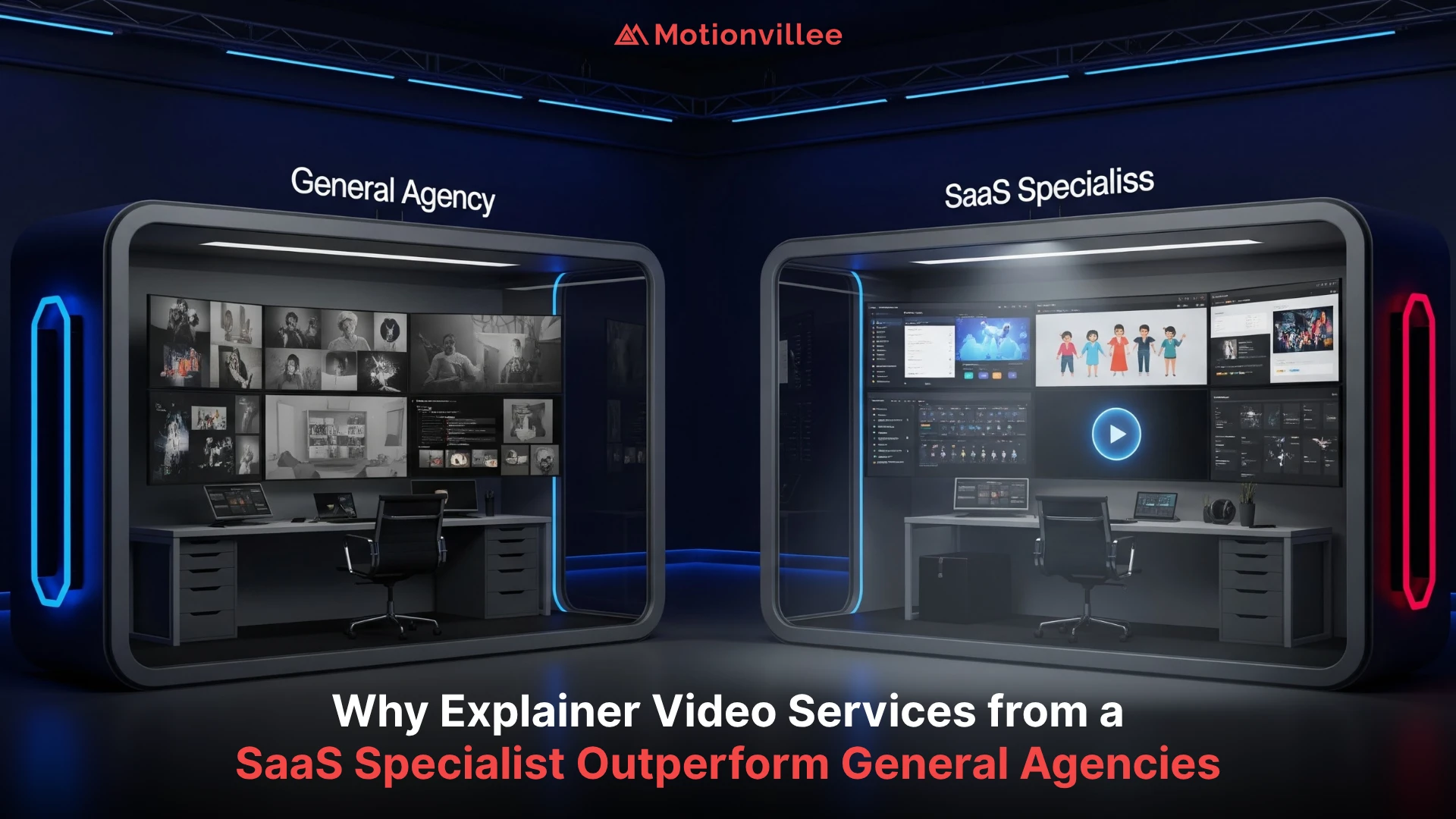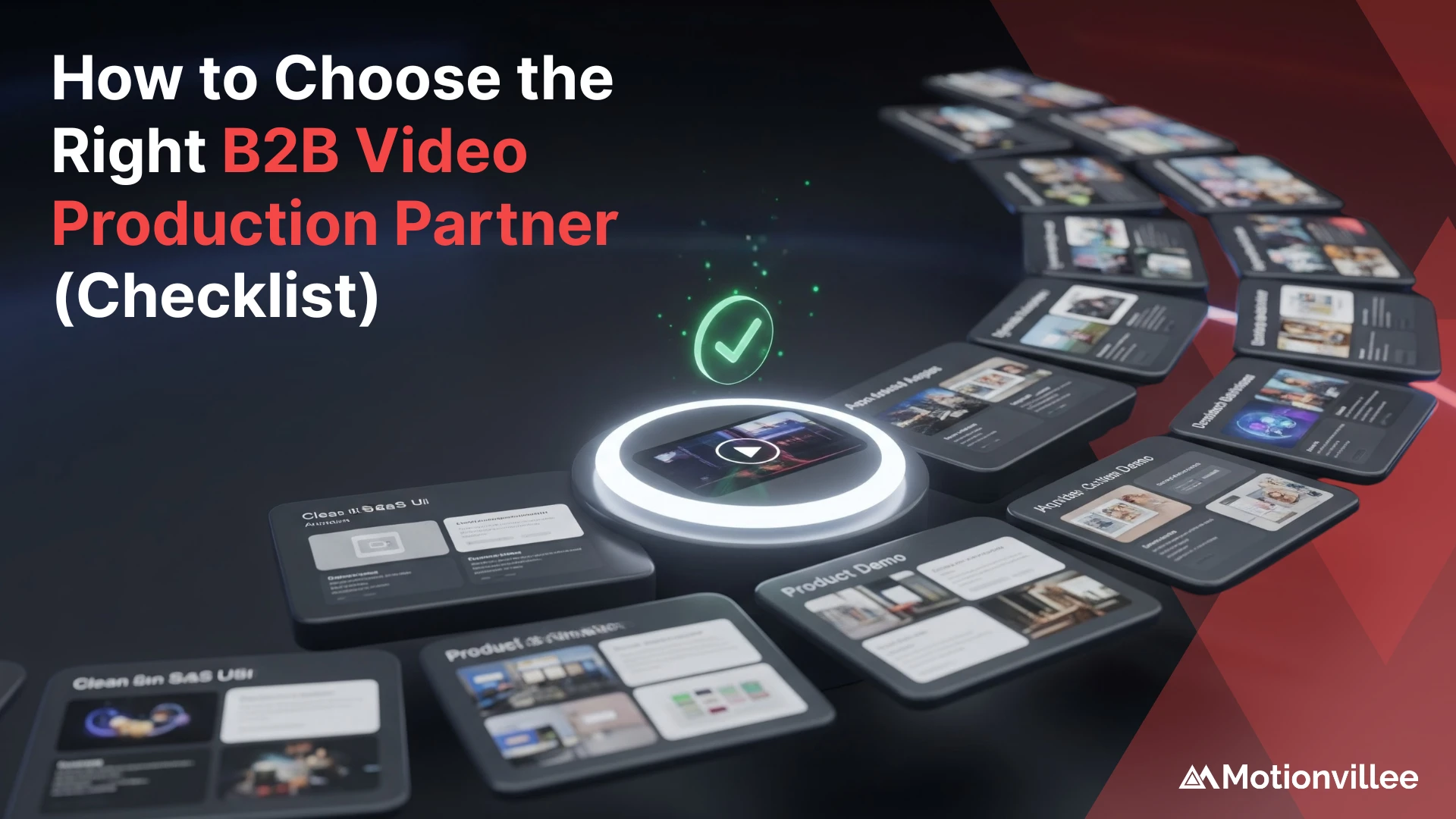Bringing Scripts to Life Through Visual Storytelling
In this behind-the-scenes look at SaaS explainer video Storyboarding Process, we explore how Motionvillee transforms written scripts into powerful visual experiences through the third stage of our 5-stage explainer video production process: Conceptualization and Storyboarding.
At Motionvillee, we created this content series to showcase how each stage builds upon the last, from creative direction to scripting, and now, to storyboarding. Every stage represents a key step in turning a client’s vision into a clear, emotionally resonant video story for B2B video production and SaaS video production needs.
In this stage, we speak with Aarti, who has spent six years at Motionvillee shaping how concepts evolve into visuals. As a storyboard artist working on animated explainer video projects, her role bridges strategy and creativity, helping the team visualize how a story will look, feel, and move before a single frame is animated.
Aarti shares her process, from interpreting scripts and designing story flow to adding emotion and meaning into every shot for SaaS product video projects.

What Does a Storyboard Artist Look for in a SaaS Explainer Video Script?
“The first thing I look for is the core message, what the brand truly wants to communicate.”
Before sketching a single frame for a SaaS explainer video Storyboarding , Aarti focuses on the message and emotion the brand wants to convey. She studies what the product or service offers, its benefits, and the feelings it should inspire.
“The target audience is always the center of everything we create,” she explains. “Every decision, from tone to visuals, must resonate with them.”
She begins by identifying key moments in the script that need visual emphasis, like a product reveal, a problem-solution beat, or a call to action. Brand guidelines and technical requirements are reviewed early to ensure consistency from the first draft to final production.
How We Plan Visual Flow and Transitions for B2B Video Production
“I start by breaking down the script into narrative beats: introduction, problem, solution, and conclusion.”
For Aarti, clarity always comes before style. Especially in B2B video production projects, where complex ideas need simple, digestible visuals.
She maps out pacing, tone, and transitions carefully. Close-ups are used to capture emotion and detail, wide shots to set context, and dynamic angles to add energy.
“Transitions should never feel random,” she says. “They connect thoughts just like sentences do in a story.”
To test the visual rhythm, Aarti first creates quick thumbnail sketches. This helps her see how one scene flows into the next before committing to detailed frames.
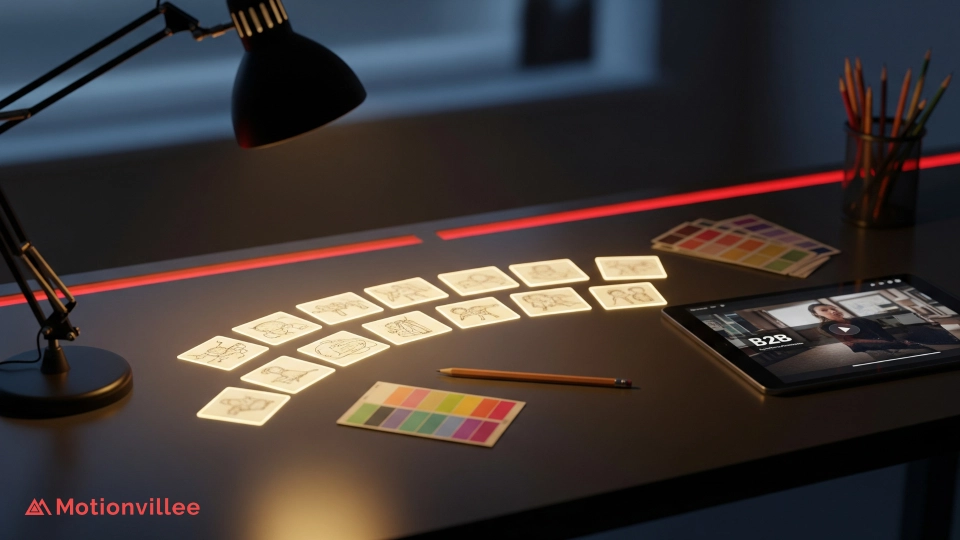
Can you walk us through your storyboard workflow?
“Our workflow has clear stages that keep everything aligned.”
Aarti breaks her animated video production storyboarding process into five steps:
- Script Breakdown: Highlight key lines, brand visuals, and emotional cues.
- Thumbnails: Explore different layouts and pacing through rough sketches.
- Detailed Frames: Add clarity on motion, transitions, and camera direction.
- Team Feedback: Review tone, emotion, and narrative clarity with the creative team.
- Final Delivery: Organize everything frame by frame with clear annotations for the animation team.
This process ensures every stakeholder, from writers to designers and animators, stays aligned on the visual vision before production begins on your SaaS product videos.
How Storyboarding Helps SaaS Brands Stand Out Visually
“Most brands talk about their products. We talk about their audience.”
Aarti focuses on visual storytelling that connects emotionally. Instead of relying on stock imagery or literal visuals, she uses metaphors and distinct design approaches that reflect the brand’s personality in SaaS explainer videos.
“I study competitors to see what’s already out there,” she says. “Our goal is to create something that feels fresh but true to the brand’s identity.”
From choosing bold color palettes to experimenting with composition and character design, her decisions ensure each storyboard has a distinct visual signature that makes the brand memorable in the competitive SaaS landscape.
What are common storyboard mistakes, and how do you avoid them?
“One common mistake is overcomplicating scenes. Too much on screen confuses the viewer.”
Aarti emphasizes the importance of visual hierarchy. Each frame should communicate one main idea clearly. If the viewer cannot understand the message at a glance, it needs refinement.
She also watches for pacing issues, scenes that drag or cut too abruptly. To avoid this, she roughly times out transitions and sequences early in the process.
“The key message must always come through,” she says. “Without clarity, even the best visuals lose meaning.”
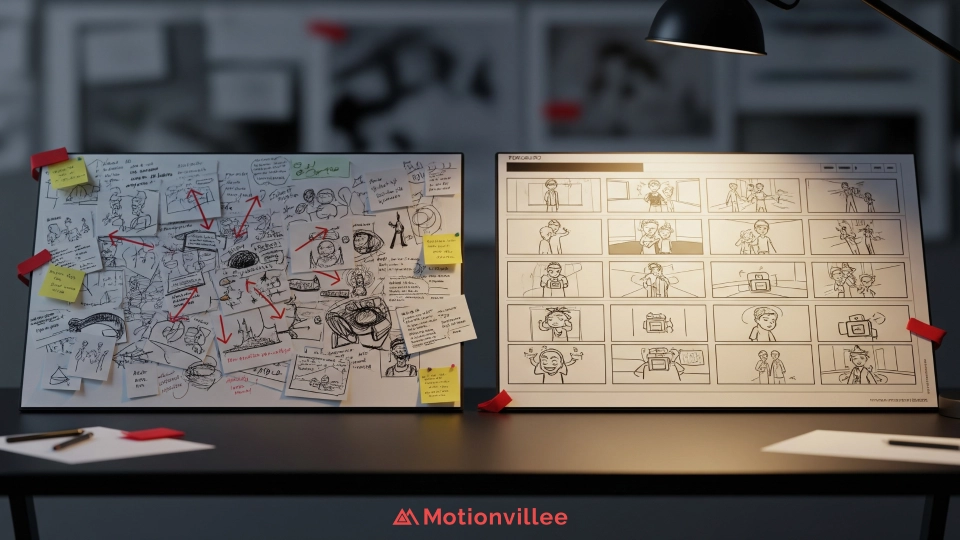
What do you do when a visual idea isn’t working?
“When something doesn’t click, I step back and revisit the message.”
Aarti believes that forcing visuals rarely works. Instead, she explores multiple directions, literal, abstract, or metaphorical, to find what best serves the story.
“I share my drafts with the team because everyone has good ideas,” she says. “Fresh perspectives often unlock what’s missing.”
Sometimes, the solution is as simple as simplifying the concept or rethinking the framing. “I’m not afraid to scrap an idea if it isn’t working,” she adds. “What matters is that the final story connects.”
The Storyboard Artist’s Perspective on SaaS Explainer Video Storyboarding
For Aarti, storyboarding is where imagination becomes structure. It turns scripts into visual blueprints that guide motion, pacing, and emotion for every SaaS explainer video project.
“Our goal is to make sure that every frame serves the story,” she says. “By the time we hand it over to the animators, the vision is crystal clear.”
Through her structured process, Aarti ensures that Motionvillee’s third stage, conceptualization and storyboarding, bridges creativity and execution. Each visual choice builds toward clarity, connection, and purpose, ensuring that every story not only looks good but feels right for animated explainer video company clients and their audiences.
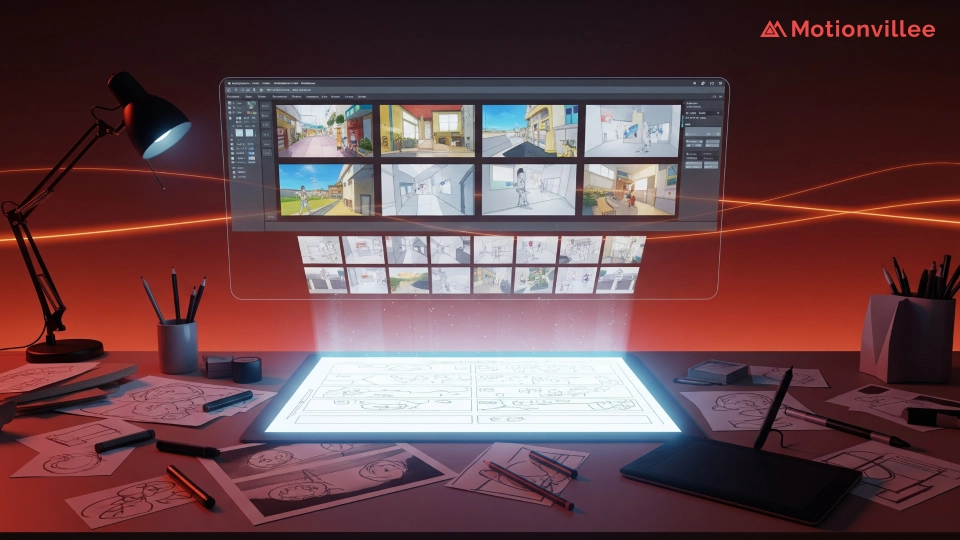
About the Storyboard Artist
Aarti is a Senior Storyboard Artist at Motionvillee, specializing in concept visualization, framing, and narrative design for SaaS and B2B brands. With six years of experience in explainer video production, she shapes the visual direction of videos by blending strategic thinking with creative storytelling to help brands simplify complex products and engage their target audiences effectively.
Ready to Transform Your SaaS Product Story?
See how strategic storyboarding can make your SaaS explainer video stand out and convert.
👉 Start your project with Motionvillee | Explore our explainer video services


